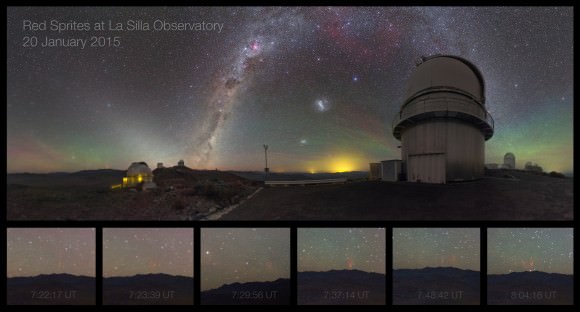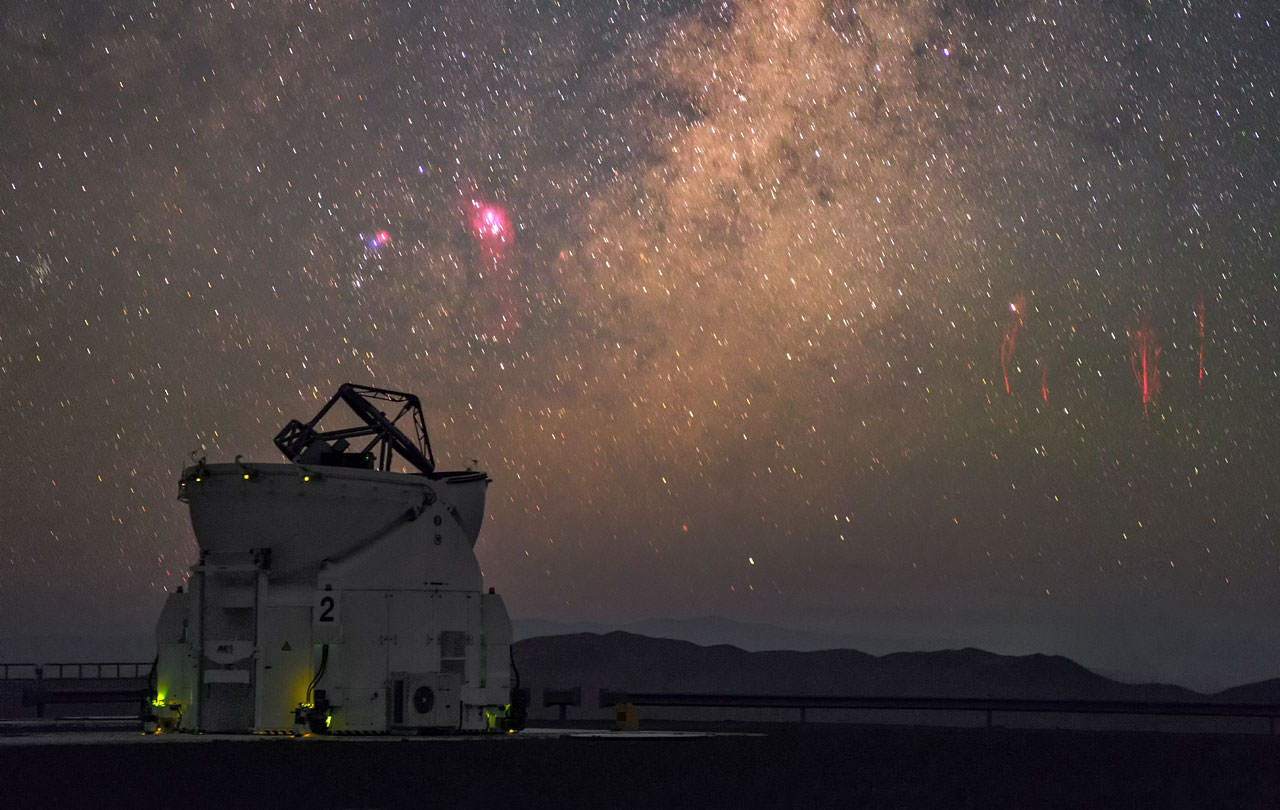At the ESO’s observatories located high in the Atacama Desert of Chile, amazing images of distant objects in the Universe are captured on a regular basis. But in January 2015, ESO photo ambassador Petr Horálek captured some amazing photos of much closer phenomena: red sprites flashing in the atmosphere high above distant thunderstorms.
The photo above was captured from ESO’s Paranal Observatory. A few days earlier during the early morning hours of Jan. 20 Petr captured another series of sprites from the La Silla site, generated by a storm over Argentina over 310 miles (500 km) away.

So-named because of their elusive nature, sprites appear as clusters of red tendrils above a lighting flash, often extending as high as 55 miles (90 km) into the atmosphere. The brightest region of a sprite is typically seen at altitudes of over 40-45 miles (65-75 km).
Because they occur high above large storms, only last for fractions of a second and emit light in the portion of the spectrum to which our eyes are the least sensitive, observing sprites is notoriously difficult.
Read more: On the Hunt for High-Speed Sprites
These furtive atmospheric features weren’t captured on camera until 1989. Continuing research has since resulted in more images, including some from the International Space Station. When they are spotted, sprites – and their lower-altitude relatives blue jets – can appear as bright as moderate aurorae and have also been found to emit radio noise. It has even been suggested that looking for sprite activity on other planets could help identify alien environments that are conducive to life.
Find out more about sprite research from the University of Alaska Fairbanks, and check out the PBS NOVA program “At the Edge of Space” below about a sprite hunt in the skies over Denver, CO conducted by a team of American scientists and Japanese filmmakers.
Source: ESO


Check out the Astronomy Picture of the Day for February 4, 2015 for another amazing image of a sprite captured by chance: http://apod.nasa.gov/apod/ap150204.html